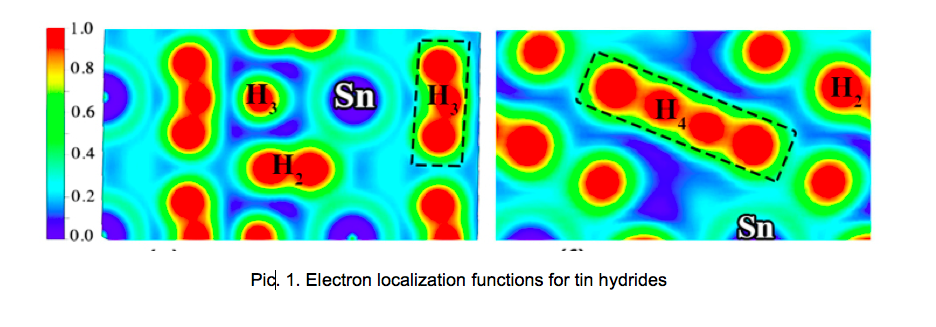Researchers from Skoltech (Russia), Moscow Institute of Physics and Technology (Russia) State University of New York (USA), Nanjing University of Posts and Telecommunications (China), Nankai University (China) and Northwestern Polytechnical University (China) have predicted unusual tin hydrides (SnH8, SnH12, SnH14) that are stable under pressure and also show high-temperature superconductivity. For this search, evolutionary algorithm USPEX (Universal Structure Predictor: Evolutionary Xtallography) was employed. Previously, only traditional tin hydride SnH4 was known, and it was predicted to become a superconductor at high pressures and up to relatively high temperatures (52 K). Novel compounds demonstrate superconductivity at higher temperatures (up to 100 K). Results of the study were published in prestigious journal “Scientific Reports”.
The race for high-temperature superconductors is running already for many years and it involved researchers all around the world; this work is part of this race. Superconductivity is a quantum phenomenon discovered in 1911 by the group of Dutch physicist Kammerling-Onnes. It manifests itself through a complete disappearance of electrical resistance accompanied by the expulsion of magnetic field from the material. Originally, superconductivity was observed only in some simple metals, such as mercury or aluminum, at temperatures of only a few degrees Kelvin above the absolute zero (-273°C). The so-called “high-temperature superconductors” display superconductivity at significantly higher absolute temperatures of the order of 40-138 Kelvin (-173°C). Despite the need to cool them down, superconductors are already used today in various devices such as, for example, high-sensitivity magnetometers or high-field magnets for magnetic resonance tomography, or particle accelerators.
“These compounds are also very interesting from the viewpoint of chemistry, because their chemicals compositions are hard to explain within classical chemistry and they contain new anion types: linear H4 groups or new H3 configurations”, – says the leader of research group, Skoltech Professor Artem Oganov.
* The Skolkovo Institute of Science and Technology (Skoltech) is a private graduate research university in Skolkovo, Russia, a suburb of Moscow. Established in 2011 in collaboration with MIT, Skoltech educates global leaders in innovation, advances scientific knowledge, and fosters new technologies to address critical issues facing Russia and the world. Applying international research and educational models, the university integrates the best Russian scientific traditions with twenty-first century entrepreneurship and innovation.
Contact information:
Skoltech Communications
+7 (495) 280 14 81

